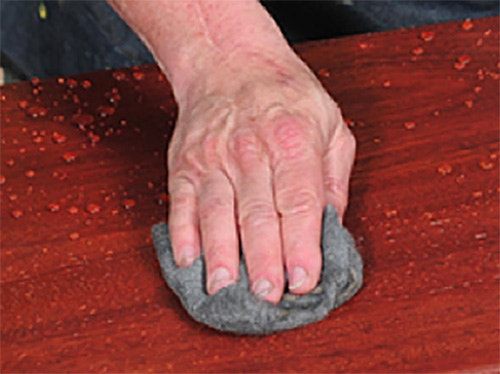Can Marine Varnish be Rubbed Out?
I've made a mess of my custom mahogany storm door. The door has four curved panels of glass, surrounded by mahogany, satin finish, that has aged through nearly 30 years of morning sunshine. The person I engaged, instead of satin finish, did a glossy marine spar varnish, which also has bubbles! Articles I've read state that glossy finish can be rubbed to a satin finish. Is this true even for marine varnish? I have a person who does odd jobs; though not skilled in finishing, he will follow directions carefully. Can we rub this down and/or put a poly over it? Thank you for any guidance you might offer. - Ellen B.
Tim Inman: The gloss problem isn't really a problem. Gloss or sheen can be corrected in several effective ways. Bubbles are the real villains here. Those bubbles must go away. Depending upon how many there are, how deep they go, and how willing the worker is to spend time to fix the problem, you'll have to pick a plan of attack and go with it. If there are only a few and/or if they are not too big or go too deep, I would recommend wet sanding to eliminate them. If there are tons of little bubbles and/or they are really big and deep, then it might be better to just strip off this layer and start from scratch. In case of doubt, I would certainly try wet sanding and see how it goes. The surface can always be stripped later if need be.
If there are only a few bubbles or if they are really big, then filling them with finish or even cyanoacrylate prior to wet sanding might be a choice. Test one or two to be sure.
After the finish has been surfaced and is ready to recoat, then the probable answer to your question is that, yes, your spar finish can be recoated. Again, test to be sure. Use the final gloss you want. There will be no bad effect from putting a satin over a gloss product, as long as the chemistry between the two layers behaves itself. In fact, as a practice on fine furniture, I often build my initial coats with high gloss finishes because they are usually somewhat harder, but mostly because they do not leave behind any cloudy, muddy, foggy aftereffects to hide my nice new colors. I complete the job with the gloss I want for the finished look.
It is quite possible the marine spar varnish used may actually be a polyurethane product. If you can find the original container, it will tell you. If you are not sure, take it to the paint store. The folks there will surely be able to help you with compatibility and get a new finish that will work. Good luck this time!
Chris Marshall: If that door is subject to lots of sunlight and occasionally moisture too, then marine or "spar" varnish was probably the most durable choice, even if the sheen isn't what you were hoping for. As Michael Dresdner says, any cured finish can be rubbed out, even marine varnish, which is softer than other options so it can remain flexible. The bubbles in the finish are concerning, though, because once those are rubbed through, there may not be much varnish left underneath the air pockets. I think I would carefully scuff-sand the whole door first to eliminate the air bubbles and create some "tooth" to the finish coat, then re-coat the door with marine varnish so you are starting from a consistent and bubble-free finish. Allow it to cure for several weeks and even longer if it's cold or humid when you start this process. Then, try rubbing out an area of the door's finish that isn't immediately noticeable (maybe the hinge edge, for instance), and see what you think about the satin effect you get.
Keep the inspiration coming!
Subscribe to our newsletter for more woodworking tips and tricks



